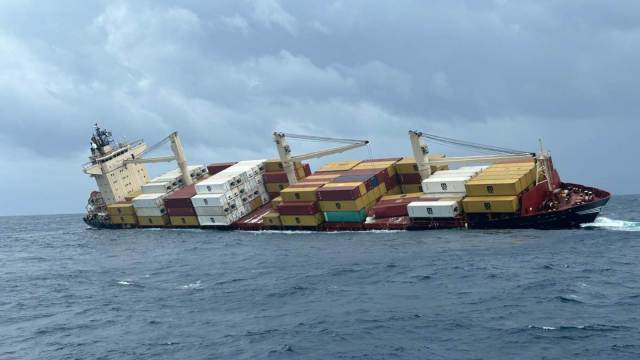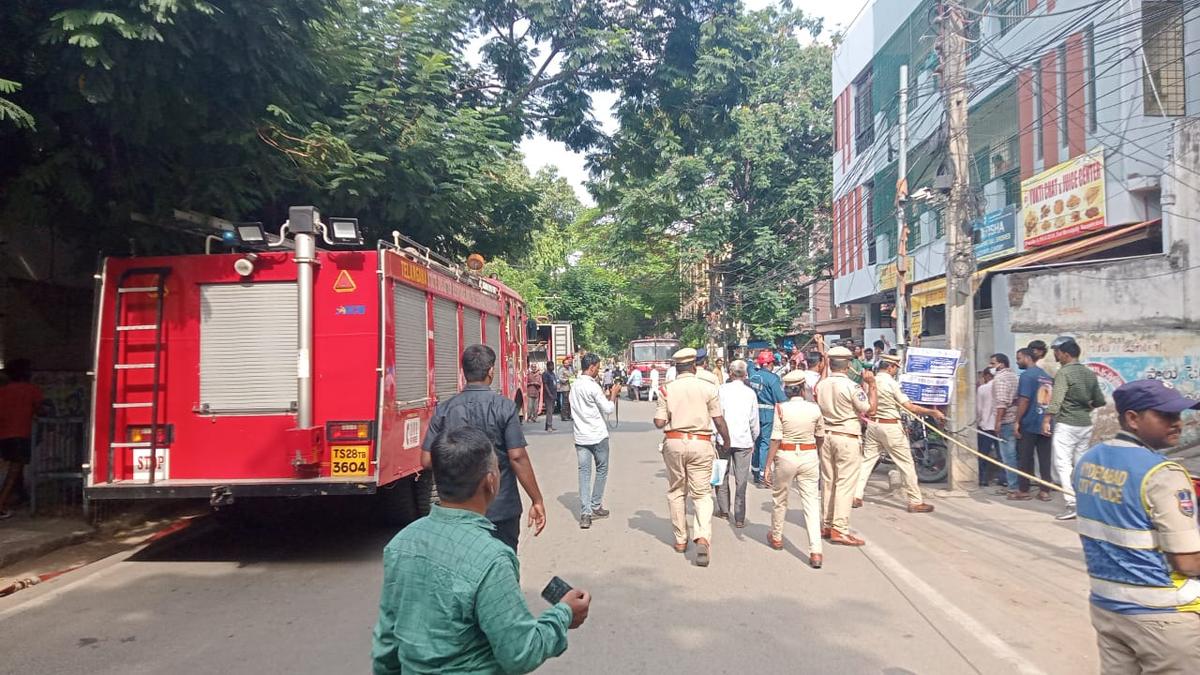ARTICLE AD BOX
 Oil spill Kerala alert: A Liberian container vessel capsized off the Kerala coast on Saturday afternoon. (Photo: Ministry of Defence)
Oil spill Kerala alert: A Liberian container vessel capsized off the Kerala coast on Saturday afternoon. (Photo: Ministry of Defence)
Containers from a Liberian-flagged cargo ship, that capsized off the Kerala coast Sunday triggering a oil spill alert in the area, have now begun washing up ashore. The situation is being closely monitored. Even as no spill has been reported so far, people have been asked to stay away from any object that drift to the shore.
So, what happened to the container ship?
MSC ELSA 3, the Liberian-flagged vessel, en route to Kochi Port from Vizhinjam near Thiruvananthapuram, started tilting due to the rough sea conditions, 38 nautical miles off the coast of Kochi on Saturday. By next day morning, multiple containers fell into the water and began to sink. According to Indian Coast Guard (ICG), the vessel capsized rapidly in the early hours of Sunday “due to flooding in one of the holds”, and was at a risk of spilling oil. “All 24 crew members of Liberian-flagged container vessel MSC ELSA 3 were rescued safely, 21 by Indian Coast Guard and 3 by Indian Navy ship, Sujata, after the vessel sank off Kochi this morning,” the Coast Guard said in a post on X on Sunday.
What is the alert about?
The Kerala State Disaster Management Authority has issued an alert to the public to keep at least 200 metres away from objects that may drift towards the coast. The state government has sounded an alert along the coast, mainly in central and southern Kerala, where the containers from the sunken ship were likely to reach in heavy wind and currents. Besides, there has been an alert against the oil slick from ship, which can reach anywhere along the Kerala coast, the government said.
How hazardous could the spill be?
The Coast Guard said the sunken ship was carrying 640 containers, including 13 containing “hazardous cargo” and 12 with calcium carbide. Additionally, the ship had 84.44 metric tonnes of diesel and 367.1 metric tonnes of furnace oil in its tanks. However, the Indian National Centre for Ocean Information and Services (INCOIS) has warned that if spillage does occur, at least two coastal districts in southern Kerala could face contamination within 36 to 48 hours.
Which areas are at potential risk?
If the oil spill, the areas that are at potential risk of contamination are Alappuzha, Ambalapuzha, Arattupuzha and Karunagappally. “These coastal zones are at risk of contamination and should be given prompt attention to minimise potential environmental impact,” said INCOIS.
How prepared is the state to tackle any adverse effect?
INCOIS said it is closely monitoring the situation and remains in coordination with relevant authorities, providing vital ocean forecast information and advisory services to support ongoing search, rescue, and environmental response operations. Soon after the tilting of the cargo ship was reported, INCOIS activated its Search and Rescue Aid Tool (SARAT) to assist in locating containers or drifting objects, it said. Additionally, ‘oil spill trajectory advisory’ simulations were run to forecast the potential spread and movement of any oil discharge, aiding mitigation and cleanup planning, it said.
The Coast Guard said it has activated comprehensive pollution response preparedness and is working in close coordination with the state administration to address all possible scenarios. The Coast Guard ship, Saksham, is engaged in oil spill response. In addition, a Coast Guard Dornier aircraft is being launched in “PR configuration for mitigating oil spill”. In the context of an oil spill response, “PR configuration” typically refers to the use of the ‘co-polarisation ratio’ (PR) method to assess the oil-water mixture ratio in a spill. This method helps determine the proportion of oil in an oil-water mixture, which is crucial for effective emergency treatment and cleanup efforts.
Story continues below this ad
The state government has asked the Factories and Boilers Department to make ready two Rapid Response Teams (RRTs) each in southern and central Kerala districts, and one each in the northern districts. Besides, in the event of oil slick reaching the shore, the state pollution control board was directed to make ready two RRTs each in the southern and central coastal districts and one each in the northern districts.



.png)
.png)
.png)

























 English (US) ·
English (US) ·